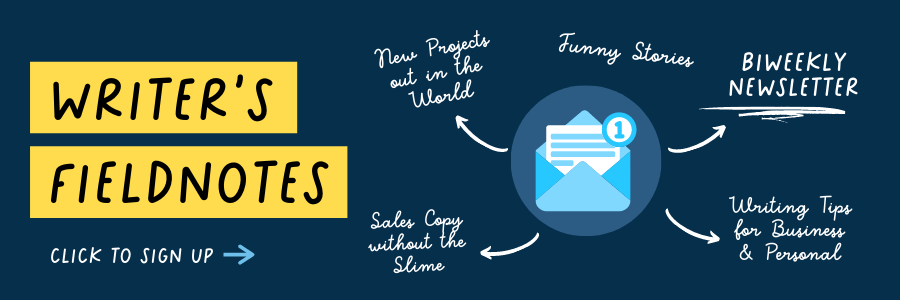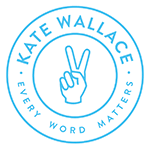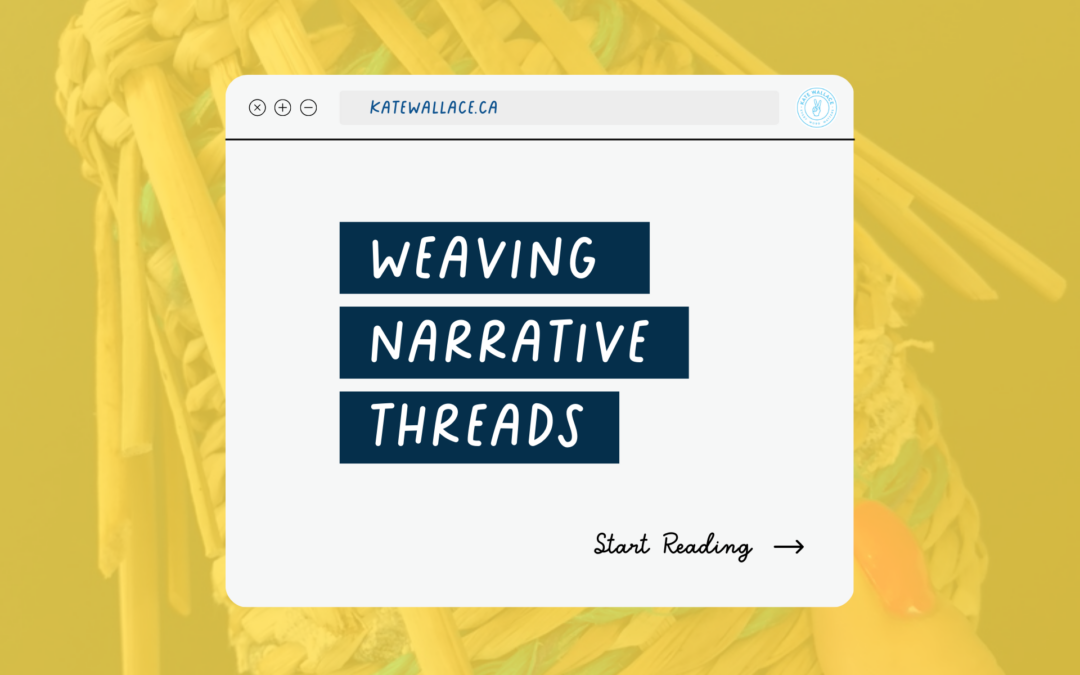I love writing metaphors and look for them constantly: in my garden and while parenting, in the acidic bubbles of my sourdough starter, at the seashore.
I was thrilled to recently discover a new one.
I’d enrolled in a basket-wearing workshop at the Saint John Arts Centre with Nora, a talented pal who studied jewelry design and has an innate sense of style. I’ve never been to art school ad always have a yawning chasm between concept and creation when I do anything visual. Still, I was keen to spend the day working with my hands (not my endlessly whirring brain) and creating just for fun.
As our excellent instructor, Ralph, introduced us to this ancient craft’s materials, tools, and techniques, a familiar feeling overcame me. I’d never made a basket before, but much of weaving mirrored the writing process.
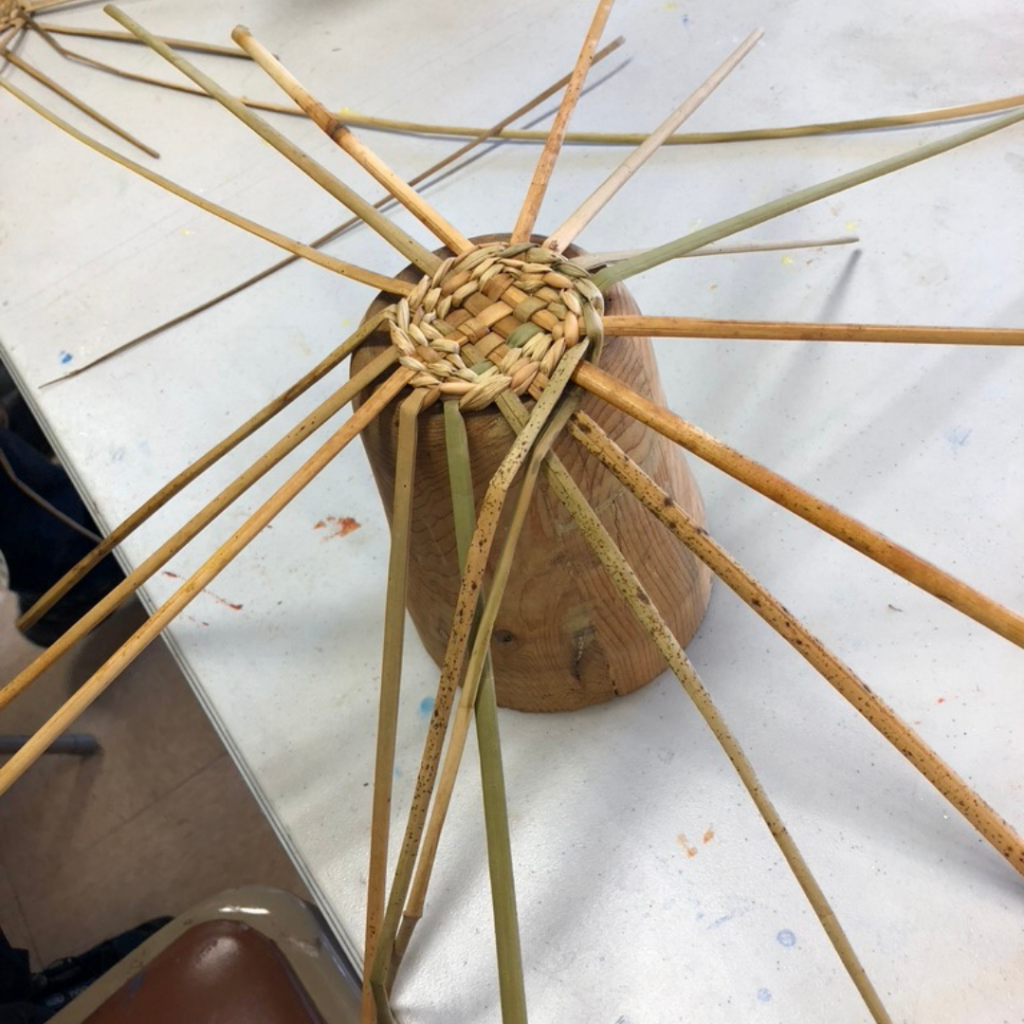
Humble Materials, Transformed
At the start of class, Ralph peeled back the plastic wrap on a long package to reveal bundles of local, primarily wild plants he’d foraged in ditches, marshes, and local forests.
It was so … plain, just a bunch of reeds and grasses. We’d craft lovely, unique baskets from these humble and familiar plants.
I realized that I’d never really looked closely at them before.
And It’s the same in writing. It’s easy to miss what’s right under our noses. By paying attention to what seems boring, bland, or even ugly and actively examining the stories and events of our day-to-day lives, we find the raw materials of our craft.
Being a Beginner is Awkward
From the outset, I was all thumbs, trying to get the eight overlapping reeds that would form the base of my basket to make a tidy grid.
As Ralph demonstrated the basic movement of the weave, I just didn’t get it. I tried to follow his hands and instructions as he effortlessly wove supple reeds through the spokes, but it hurt my spatially-challenged brain.
Being left-handed didn’t help in a room of righties. And I was nervous about doing it wrong from the beginning, cursing my creation from the outset, or, worse, having to undo my initial work.
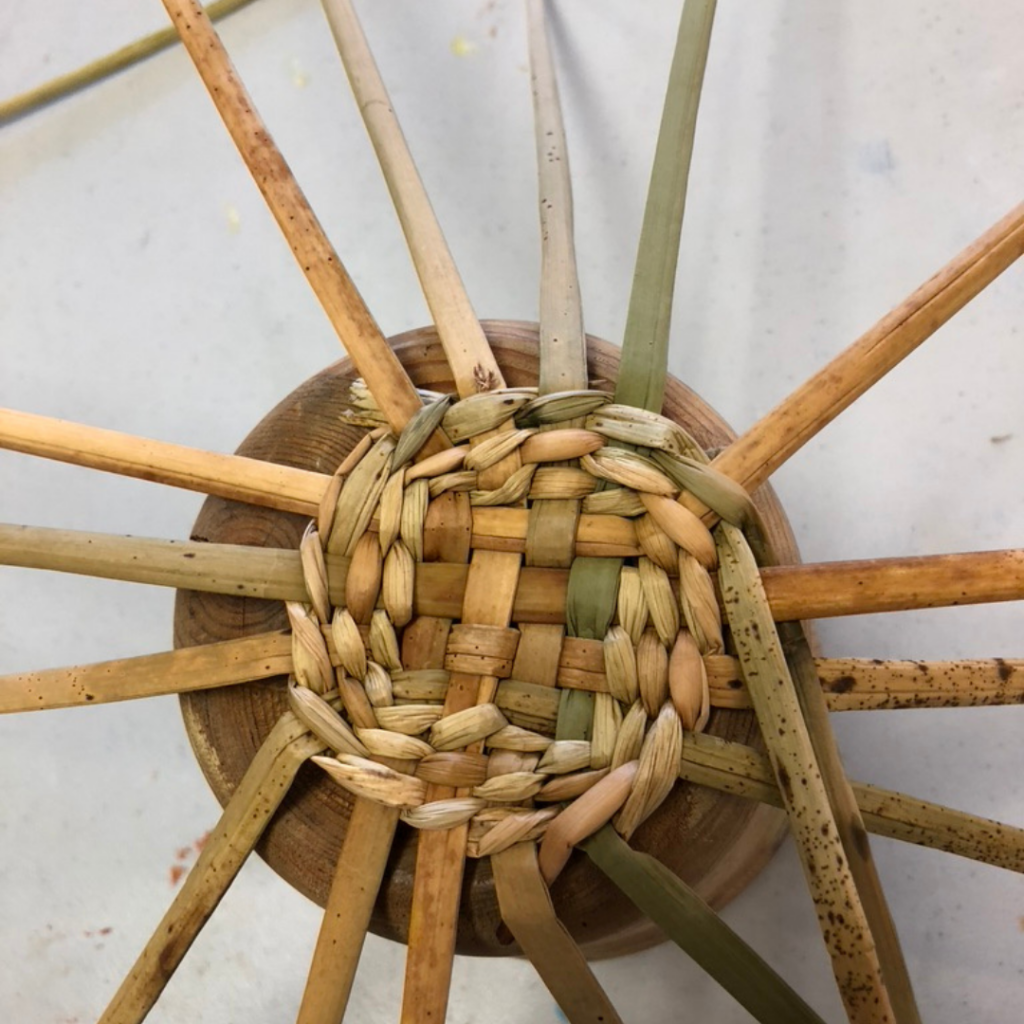
But then, something clicked. I could feel the logic of the process: over, under, tug down, repeat. Repeat, repeat, repeat. By the end of the day, my fingers were more adept, and I could easily spot and correct my missteps. I’d overcome my nervousness and was able to enjoy the flow, chatting with Nora as our baskets grew, row by row.
Of course, in writing, weaving, or any new skill, the only way to not be a beginner forever is to be a noobie for a short time. It doesn’t last forever, and the delight of mastering even the basics is worth it.
Learn the Rules, then Play.
After lunch, I returned to my basket feeling confident enough to try an open form of weaving off the wooden, vase-shaped form providing structure. I tend to like loose forms and hate rules, so off I went.
It did not go well. The tidy, symmetrical little form I’d woven in the morning was going rogue. My free-form layers looked like hell, even to my untrained eyes. I called Ralph over.
“It’s a darkest-before-the-dawn kind of situation,” he said, advising me to keep going. So I did.
A few rows later, it started to cohere into a pleasingly organic, asymmetrical form. I just had to trust in the process and myself.
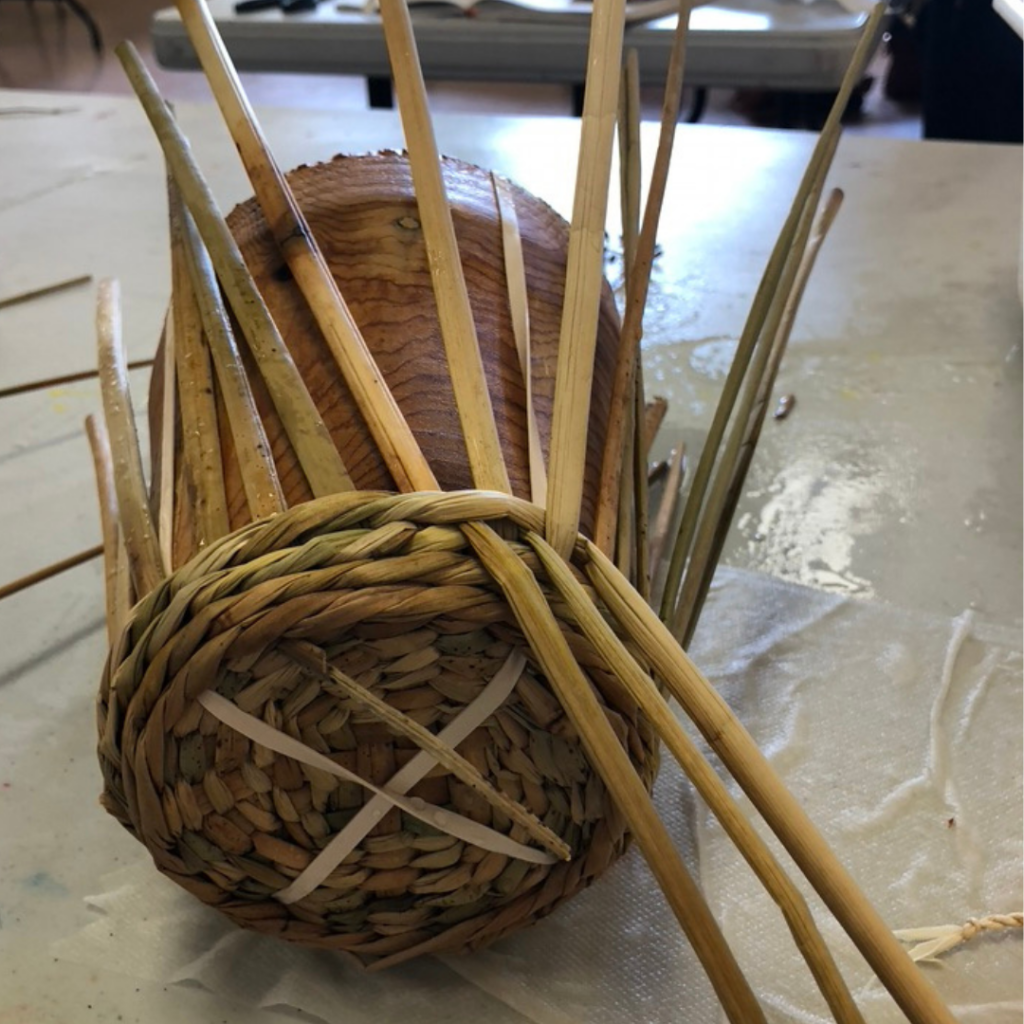
Flow is the Goal
Weaving is repetitive, but it’s not boring. It’s meditative. Over seven hours that seemed to melt away, I wove dozens of damp reeds hundreds, if not thousands of times, around the supporting spokes.
While my hands and eyes were on my work, my mind wandered, an inversion of the writing process, where the mind is busy, and the hands follow.
In any craft or creative work, this place of ease, where time seems to disappear, is the ur-state, but it takes a lot of grunt work to get there.
Finishing Is Fussy
I got a little panicky as the workshop’s 4 pm end time drew near. I’d woven a respectable basket, but the spokes were still poking up. I needed to tie up loose ends, literally, and get a finished rim on my creation.
After the freedom of weaving, seeing my basket rise ring by ring around the supporting frame, it felt tedious. And this reminded me of writing, too, specifically the editing process. It’s just as important as the writing but not as fun as the making. But it is essential to finishing strong.
I sewed in my protruding reeds, wove a three-row rim, and even took a little creative risk, leaving my reed ends poking out for a spiky collar around my basket.
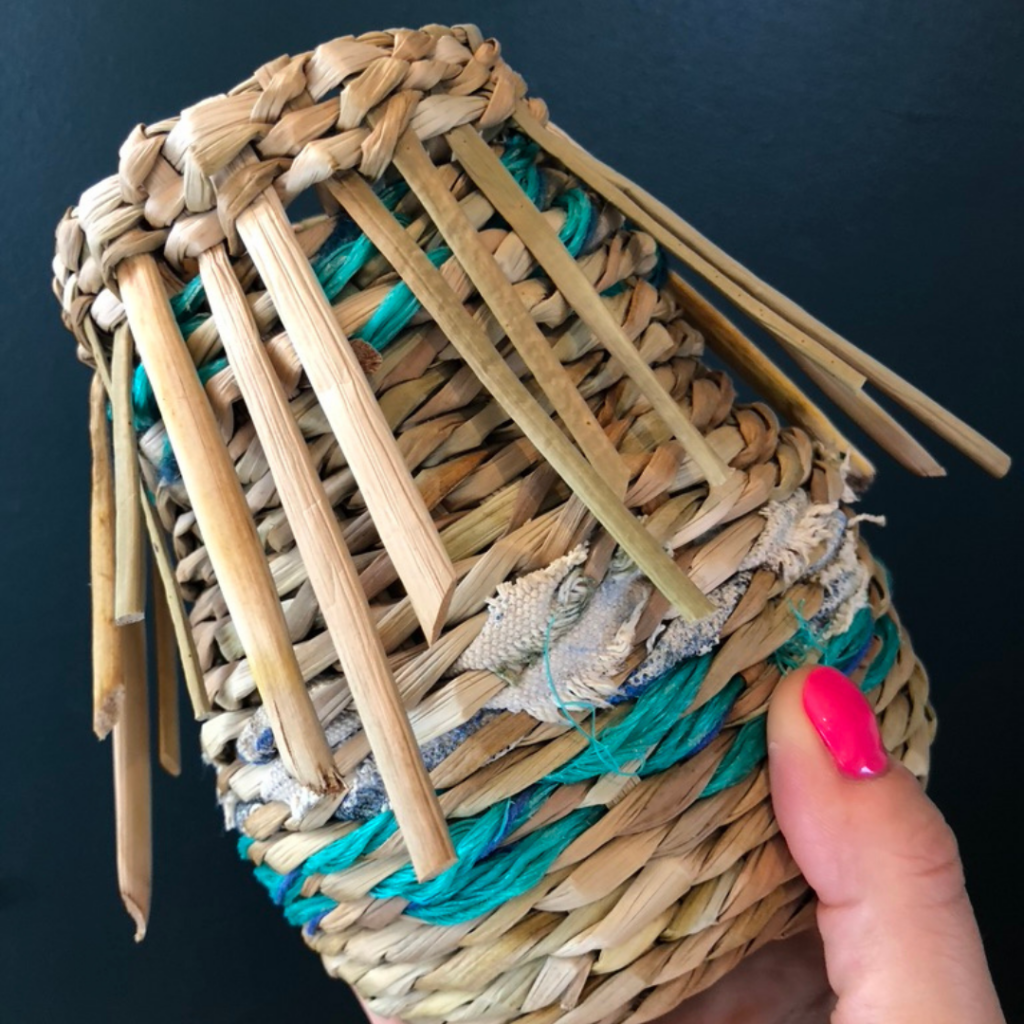
I was proud of my first basket and excited to try it again. Gus and I are going to forage for reeds this summer, and I’m already looking at stems and vines in my garden as potential fibre sources. It’s incredible how one creative act or project nurtures the next one.
So, tell me: do you share my love of metaphor? What are your favourites for writing or creating? And what creative projects, writing or otherwise, are you up to in your life and work?
